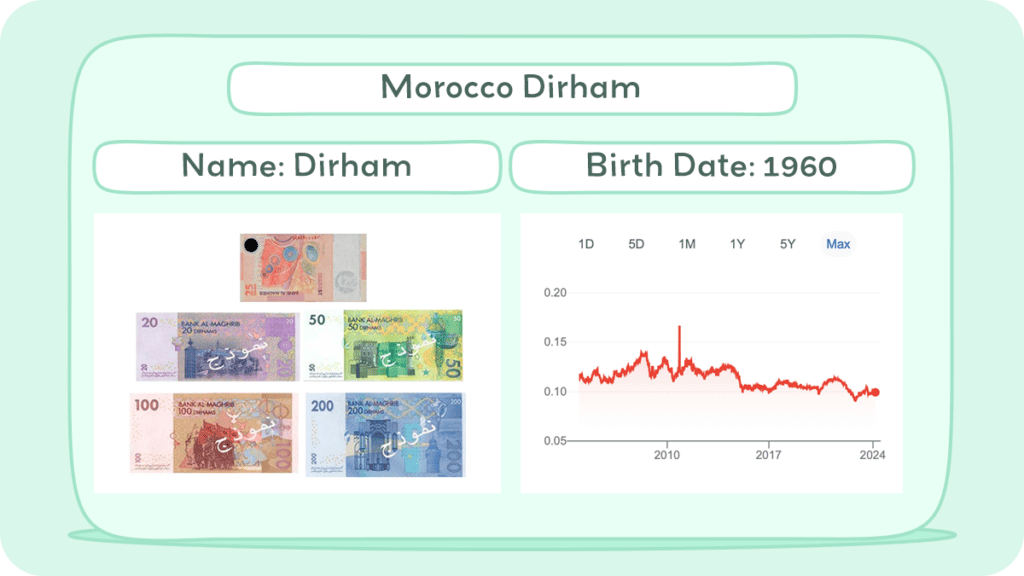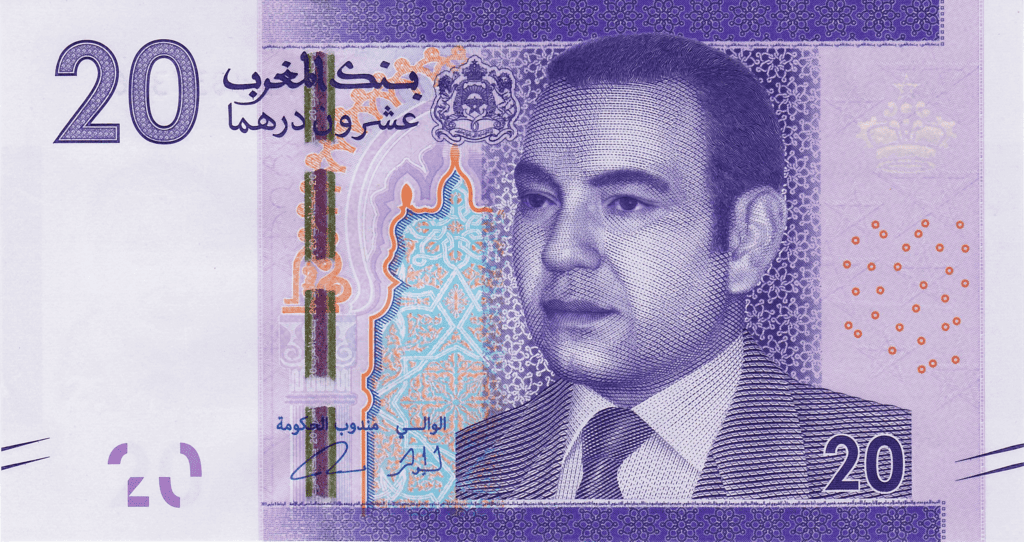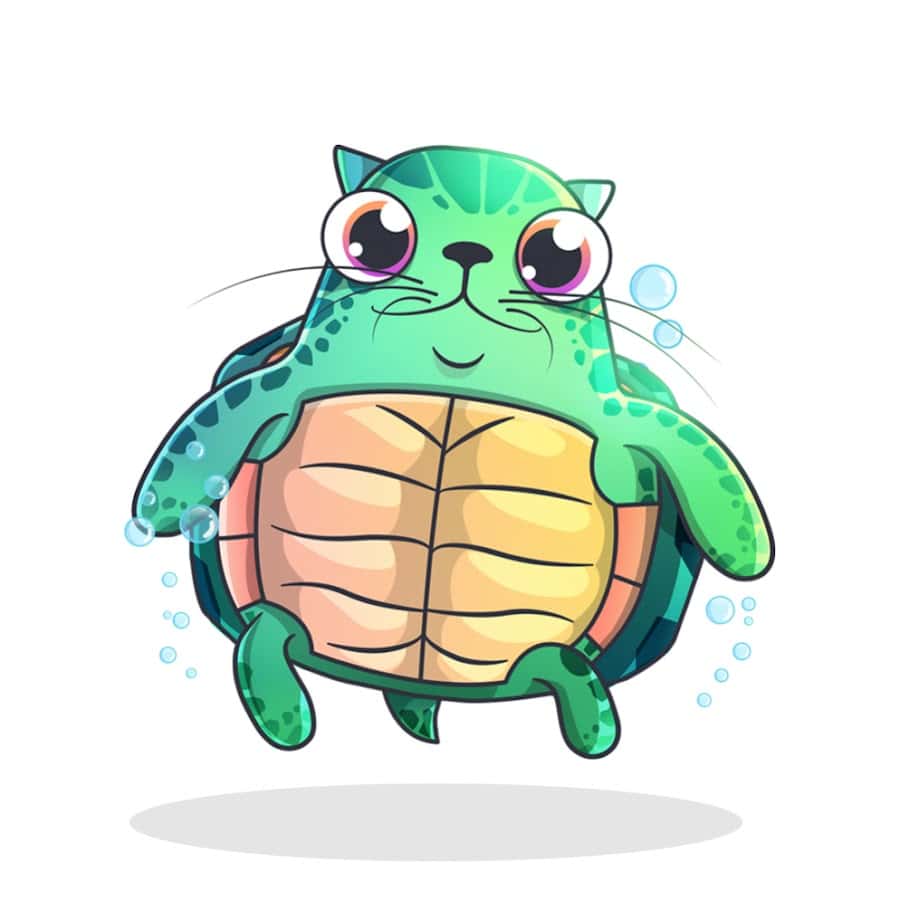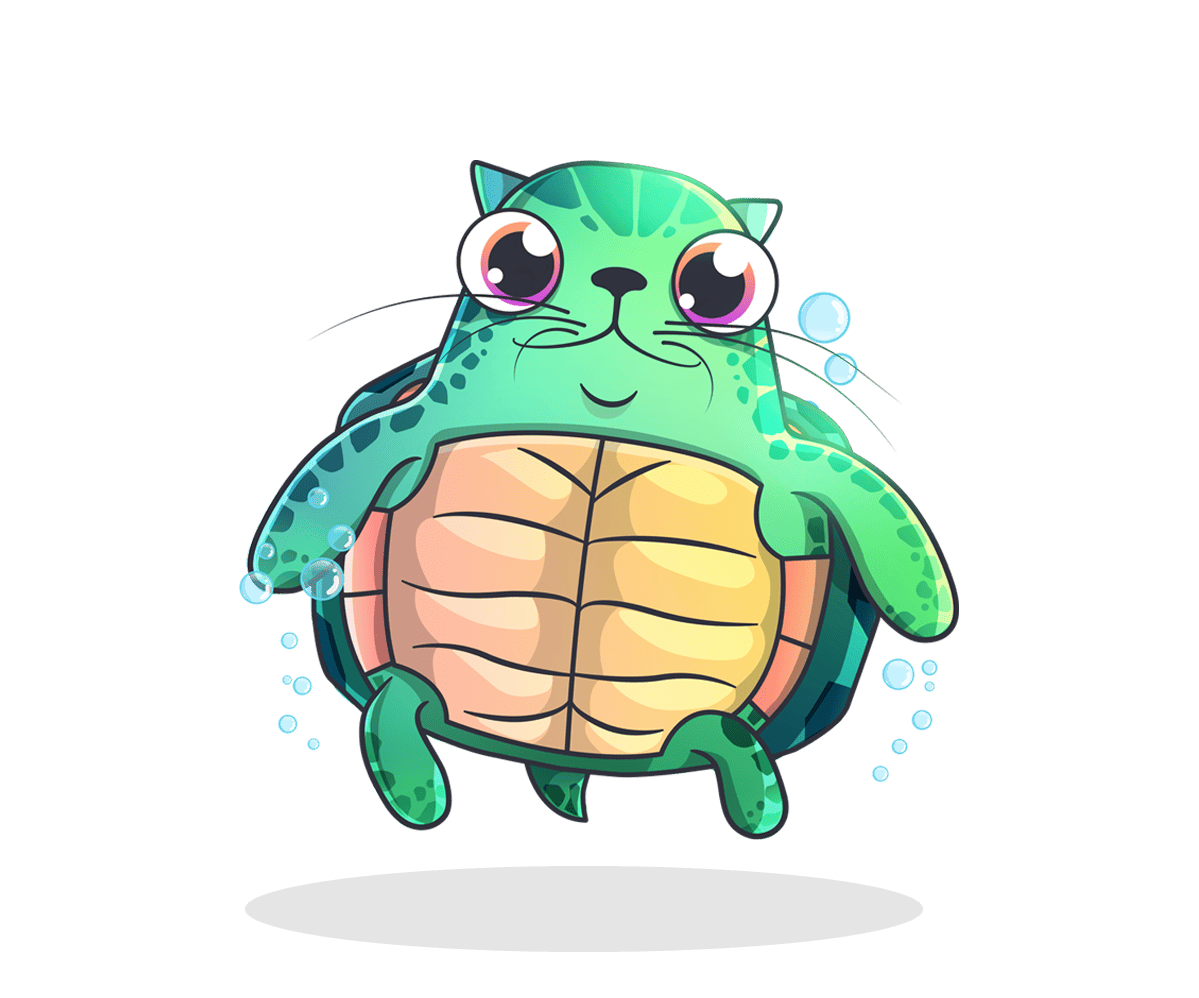The official currency of Morocco is the Moroccan dirham (MAD), which is divided into 100 centimes. Moroccan banknotes come in denominations of 20, 50, 100, and 200 dirhams, while coins come in 1, 2, 5, and 10 dirhams, as well as 5, 10, 20, and 50 centimes.

Morocco’s currency has a long and fascinating history. The first Moroccan coins were minted in the 7th century, and over the centuries, the country has used a variety of currencies, including the Hassani rial, the Moroccan franc, and the dirham.
This article delves into the history and facts surrounding the Moroccan dirham, the official currency of Morocco. Explore its transformation from ancient coins to modern banknotes, uncovering its role in trade, cultural influences, and current economic significance.
Historical Journey of Morocco Currency
The Hassani rial was introduced in 1881 by Sultan Moulay El Hassan as a modern coinage for Moroccans. However, when the French took control of Morocco, the franc replaced the rial as the official currency.
The scarcity of silver coins and the rise of the value of the Hassani led to a sharp monetary crisis in 1914, which continued until the end of the First World War, leading to the demonetization of the Hassani and the creation of the franc. The Moroccan Franc banknotes issued by the State Bank were put into circulation on November 15, 1920.
In 1959, Morocco gained independence from France, and the Moroccan franc was replaced by the Moroccan dirham in 1960. The dirham is the official currency of Morocco and is divided into 100 centimes.
The word “dirham” derives from the Greek currency, the drachma. The dirham has been in circulation since 1960 and has been through several changes since then.
The first dirham banknotes were introduced in 1965, and the first coins were minted in 1974. In 1987, the dirham was officially pegged to a basket of currencies, which helped stabilize its value. The dirham has remained relatively stable ever since, and it is widely accepted throughout Morocco.
From the Hassani rial to the dirham, Morocco’s currency has evolved over the centuries, reflecting the country’s changing political and economic landscape. Today, the dirham is a stable and widely accepted currency that plays a vital role in Morocco’s economy.
History of Coins
In 1960, Morocco introduced silver 1 dirham coins, expanding the coinage in 1965 with nickel 1 dirham and silver 5 dirham coins. A significant change occurred in 1974 with the introduction of santim denominations (1, 5, 10, 20, and 50 santimat) alongside 1 and 5 dirham coins, adjusting the metal composition for different denominations.
By 1980, Morocco released cupro-nickel 5 dirham coins, which became bi-metal in 1987, displaying dual year designations to mark the Gregorian and Islamic calendar years.
The coinage evolved further with the discontinuation of 1 santim coins in 1987 and the introduction of new designs, including a 1⁄2 dirham coin replacing the 50 santimat, without altering size or composition.
The 1990s and early 2000s saw the introduction of bi-metal 5 and 10 dirham coins and cupro-nickel 2 dirham coins, enhancing security features such as latent images in the 2012 series.
In 2023, Morocco issued a new series maintaining previous denominations, with notable specifications for the 2012 series including various compositions like Nordic gold for 10 santimat and cupro-nickel for higher denominations.
Each coin features distinctive designs on the obverse and reverse, ranging from the Kingdom’s arms, Moroccan flora and fauna, to architectural and natural landmarks, with the higher denominations incorporating advanced security features.
History of Bills
The Moroccan dirham banknotes have evolved over time, starting with overprints on franc notes in denominations of 50 and 100 dirhams. By 1965, Morocco issued new notes for 5, 10, and 50 dirhams, and introduced 100 dirham notes in 1970, 200 dirhams in 1991, and 20 dirhams in 1996.
Coins replaced the 5 and 10 dirham notes in 1980 and 1995, respectively. In 2009, to mark its 50th anniversary, Bank Al-Maghrib released a commemorative 50-dirham note featuring portraits of Kings Mohammed VI, Hassan II, and Mohammed V.
In 2012, a 25-dirham note was introduced to celebrate 25 years of banknote production, notable for being the first to use Durasafe, a paper-polymer composite. This note incorporated advanced security features, including a color-shifting security thread and transparent windows.
2013 saw the introduction of a new series highlighting Moroccan architectural heritage and featuring King Mohammed VI. This series aimed to symbolize the country’s openness and rich cultural legacy.
In 2019, a polymer 20-dirham note was issued to commemorate the 20th anniversary of King Mohammed VI’s reign.
The Moroccan dirham banknotes have been updated through various series over the years, each featuring distinct designs that reflect Morocco’s rich culture, history, and landscapes. Here’s a simplified overview:
- 1987 Series (and 1991 Revision): Introduced in 1987, this series includes 10, 50, 100, and 200 dirham notes. The colors range from yellow and pink to green, brown, and blue, with each note depicting King Hassan II on the obverse and various Moroccan themes on the reverse, such as a Moroccan lute, a fantasia scene, the Green March, and maritime symbols.
- 1996 Series: The 20 dirham note from this series showcases the Great Mosque of Casablanca and a wall fountain from the Hassan II Mosque, in a reddish-brown hue.
- 2002 Series: This series introduced notes in denominations of 20, 50, 100, and 200 dirhams, featuring King Mohammed VI. The designs include significant Moroccan landmarks and symbols, like “Bab Challah” in Rabat, a clay-made building (Ksour), the Green March, and the Grand Mosque of Casablanca.
- 2013 Series: Launched in 2013, this series includes vibrant 20, 50, 100, and 200 dirham notes, highlighting Morocco’s architectural and natural beauty with images of the Hassan II Bridge, Ouzoud Falls, Sahrawi tents with camels, and the port of Tangier.
Inflation and Buying Power of Morocco Currency

If you are planning to visit Morocco or do business with the country, it’s essential to understand the inflation and buying power of the Morocco currency. Inflation affects the value of money and the purchasing power of consumers.
According to the inflation calculator between 1970 and 2023, the Moroccan dirham lost 89.85% of its domestic purchasing power. The historical inflation rate for Morocco between 1970 and 2023 was 237.60%, with the average annual inflation being 4.48%. The 2022 inflation rate was above average, at 6.7%.
Morocco’s economy has come under pressure from supply shocks, including severe drought and a surge in commodity prices that have fed inflation, according to the World Bank’s latest report.
The report indicates that Morocco’s economy rebounded strongly post-COVID-19 but came under mounting pressure from overlapping supply shocks.
Currently, Morocco follows an administered exchange rate regime, where Bank Al-Maghrib sets the exchange rate based on a fixed parity linked to a currency basket.
Before transitioning to a more flexible exchange rate regime, a transitional phase is being implemented, characterized by a gradual exchange rate adjustment process.
Understanding purchasing power parity (PPP) is essential for businesses and individuals to make informed decisions when trading with Morocco. PPP is measured by comparing the cost of a “basket of goods” between two places. For instance, a loaf of bread, jug of milk, and 1lb bag of potatoes will cost a different amount in Morocco than in the USA. This number is shown as a ratio.
Morocco’s purchasing power parity was at a level of 3.7 local currency units (LCU) per international dollar in 2022, down from 3.8 LCU per international dollar the previous year. This is a change of 3.73%.
Moroccan Dirham
The 2013 series of Moroccan dirham banknotes showcases the country’s rich cultural and natural heritage, featuring King Mohammed VI and the coat of arms of Morocco. Each denomination highlights a different aspect of Moroccan life and landscapes:
20 Dirhams

20 Dirhams: Colored in purple, orange, and blue, this note depicts a train crossing the Hassan II Bridge over the Bou Regreg river in Rabat on one side, and the Hassan II Mosque along with city buildings in Casablanca on the other.
50 Dirhams

50 Dirhams: This note features green, yellow, and blue colors, showcasing the Ouzoud Falls, an argan tree with its fruit and a bird, symbolizing Morocco’s natural beauty.
100 Dirhams

100 Dirhams: With hues of brown, yellow, violet, and blue, it illustrates a Sahrawi tent, a wind turbine farm, and three camels with riders in the desert, reflecting Morocco’s desert culture and commitment to renewable energy.
200 Dirhams

200 Dirhams: This denomination uses blue, green, and violet to present a cargo ship, gantry cranes, and shipping containers in the port of Tangier on one side, and a lighthouse with trees on Cape Spartel in Tangier on the other, highlighting Morocco’s maritime importance.
Issued between 2012 and 2013, these notes blend traditional and modern elements of Morocco, with each banknote featuring advanced security measures including watermarks and electrotype elements for authenticity.
Currency Usage in Morocco
Morocco’s official currency is the Moroccan dirham (MAD), which is further divided into smaller denominations called santimat. One dirham is equivalent to 100 santimat. The banknotes in circulation come in denominations of 20, 50, 100, and 200 dirhams, while the coins are available in 1, 2, 5, and 10 dirhams.
When it comes to currency usage in Morocco, it’s best to have Moroccan dirhams on hand. Most businesses in Morocco only accept cash, and credit cards are not widely accepted outside of larger establishments such as hotels and restaurants.
Is USD accepted in Morocco?
While some establishments may accept US dollars, it’s not a widely accepted currency in Morocco. It’s best to exchange your USD for Moroccan dirhams at authorized money exchange offices scattered across popular Moroccan cities. It’s not recommended to exchange currency at airport terminals, as they tend to have higher fees.
When exchanging your currency, be sure to check the exchange rate to ensure you’re getting a fair deal. It’s also a good idea to carry smaller denominations of dirhams, as some businesses may not have change for larger bills.
In summary, it’s best to have Moroccan dirhams on hand when traveling in Morocco. While some establishments may accept US dollars, it’s not a widely accepted currency, and credit cards are not widely accepted outside of larger establishments. Be sure to exchange your currency at authorized money exchange offices and carry smaller denominations of dirhams.
Exchanging Currency in Morocco
If you’re planning to travel to Morocco, you’ll need to exchange your currency for Moroccan dirhams (MAD). Here’s what you need to know about exchanging currency in Morocco.
Where can I exchange Morocco currency?
You can exchange your currency at the airport, banks, exchange offices, and some hotels in Morocco. It’s important to note that some hotels may offer a less favorable exchange rate, so it’s best to compare rates before exchanging your money.
Exchange offices, also known as bureaux de change, are a popular option for exchanging money in Morocco. They offer competitive rates and are often open outside of normal banking hours. However, it’s important to be cautious when using exchange offices as some may charge high fees or give you counterfeit money.
What to know before exchanging currency in Morocco
Before exchanging your currency in Morocco, there are a few things you should keep in mind:
- Exchange rate fluctuations: The exchange rate for the Moroccan dirham can fluctuate, so it’s important to keep an eye on the rate before exchanging your money. You can use an online currency converter to get an idea of the current exchange rate.
- Fees and commissions: Some exchange offices and banks may charge fees or commissions for exchanging your currency. It’s important to compare rates and fees to ensure you’re getting a fair deal.
- ATMs: ATMs are widely available in Morocco, and they offer a convenient way to withdraw cash. However, it’s important to check with your bank before traveling to ensure that your ATM card will work in Morocco. Some banks may charge a fee for using ATMs abroad.
- Currency restrictions: There are no restrictions on the amount of foreign currency you can bring into Morocco, but there are limits on the amount of Moroccan currency you can take out of the country. Currently, the limit is 2,000 MAD per person.
Overall, exchanging currency in Morocco is a straightforward process, but it’s important to be aware of the potential pitfalls and to compare rates and fees to ensure you’re getting the best deal.
Choosing Between USD and Morocco Currency
If you’re planning a trip to Morocco, one of the most important decisions you’ll have to make is whether to use US dollars or Moroccan dirhams. Both currencies are accepted, but there are some factors to consider when deciding which one to use.
Exchange Rate
The exchange rate between USD and Moroccan dirhams fluctuates regularly, so it’s important to check the current rate before making any transactions.
Convenience
While many businesses in Morocco accept USD, it’s still important to have some Moroccan dirhams on hand for smaller transactions and to avoid potential confusion over exchange rates. You can exchange USD for Moroccan dirhams at banks, exchange offices, and some hotels.
Fees
When exchanging currency, be aware of any fees that may be charged. Some exchange offices may charge higher fees than others, so it’s a good idea to shop around for the best rates. Additionally, some credit cards charge foreign transaction fees, so it’s important to check with your bank before using your card in Morocco.
Tips
Here are some tips to help you make the most of your currency exchange:
- Always check the current exchange rate before making any transactions.
- Be aware of any fees that may be charged when exchanging currency.
- Carry both USD and Moroccan dirhams to ensure you have the appropriate currency for any transaction.
- Use a credit card with no foreign transaction fees, if possible.
- Consider exchanging currency at a bank or exchange office for the best rates.
By considering these factors, you can make an informed decision about which currency to use during your trip to Morocco.
Cost of Living in Morocco
If you are planning to travel or move to Morocco, it is essential to understand the cost of living in the country. The cost of living in Morocco is about 50% lower than the US, making it an affordable destination for tourists and expats.
According to Numbeo, accommodation is one of the most significant expenses in Morocco, but it is still relatively cheap compared to other countries.
The average cost of renting a one-bedroom apartment in the city center is around 5,120 MAD ($500 USD) per month, while a three-bedroom apartment costs around 9,240 MAD ($900 USD) per month.
Moroccan cuisine is delicious and affordable. You can enjoy a meal at a local restaurant for as little as 35 MAD ($3.50). If you prefer to cook at home, the cost of groceries is relatively low. For example, a gallon of milk costs around 29.80 MAD ($3), a loaf of bread costs around 4.46 MAD ($0.44), and a pound of chicken costs around 25 MAD ($2.50).
The cost of transportation in Morocco is also affordable. A one-way ticket on local transport costs around 5 MAD ($0.50), while a taxi ride within the city center costs around 20 MAD ($2). If you prefer to rent a car, the average cost is around 300 MAD ($30) per day.
The cost of utilities in Morocco is relatively low. The average monthly cost of electricity, water, and gas for a small apartment is around 393.51 MAD ($40). Internet and mobile phone services are also affordable, with an average monthly cost of around 360 MAD ($35).
Overall, the cost of living in Morocco is relatively low, making it an affordable destination for tourists and expats. By understanding the costs associated with accommodation, food and drink, transportation, and utilities, you can better plan your budget and enjoy your time in Morocco without breaking the bank.
Don’t Get Scammed Tips
When traveling to Morocco, it’s essential to be aware of the currency and how to avoid scams. Here are some tips to help you avoid getting scammed:
1. Exchange money at legitimate places
Only exchange your money at authorized exchange offices or banks. Avoid exchanging money with street vendors or strangers, as they may give you counterfeit money or charge you a higher exchange rate.
2. Be aware of common scams
Morocco is known for its reputation for scams, including fake money, helpful stranger scams, and overcharging scams. It’s crucial to be aware of these scams and check your money before accepting them. It’s also essential to negotiate prices beforehand to avoid overcharging vendors for goods or services.
3. Use small bills
When paying for goods or services, try to use small bills, as some vendors may not have enough change for larger bills. It’s also a good idea to carry small bills with you for tipping or small purchases.
4. Keep your money safe
Keep your money and valuables safe by using a money belt or keeping them in a secure location. Avoid carrying large amounts of cash with you, as it may make you a target for theft.
By following these tips, you can avoid getting scammed when dealing with Morocco currency. Remember to always be aware of your surroundings and trust your instincts.

